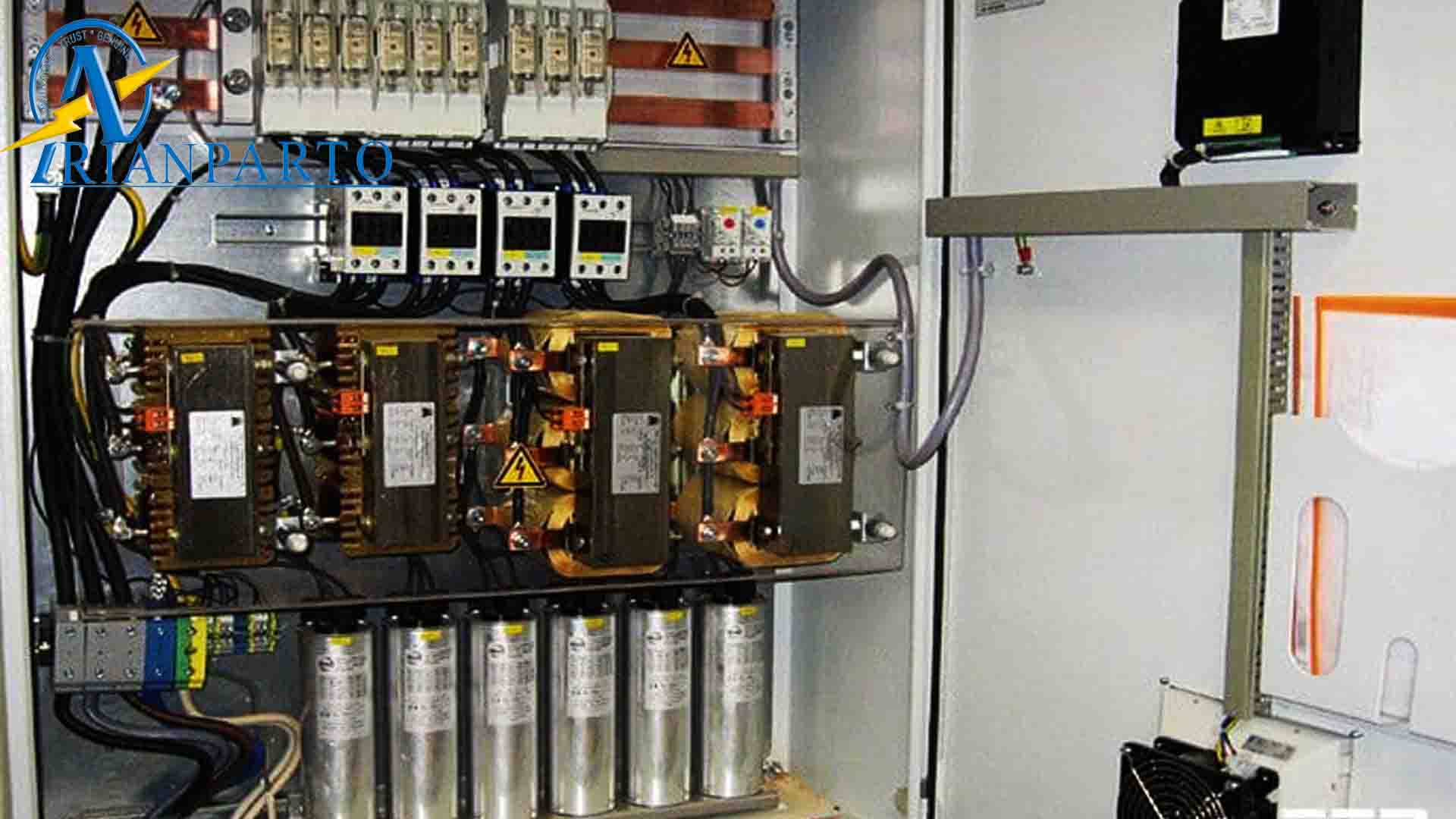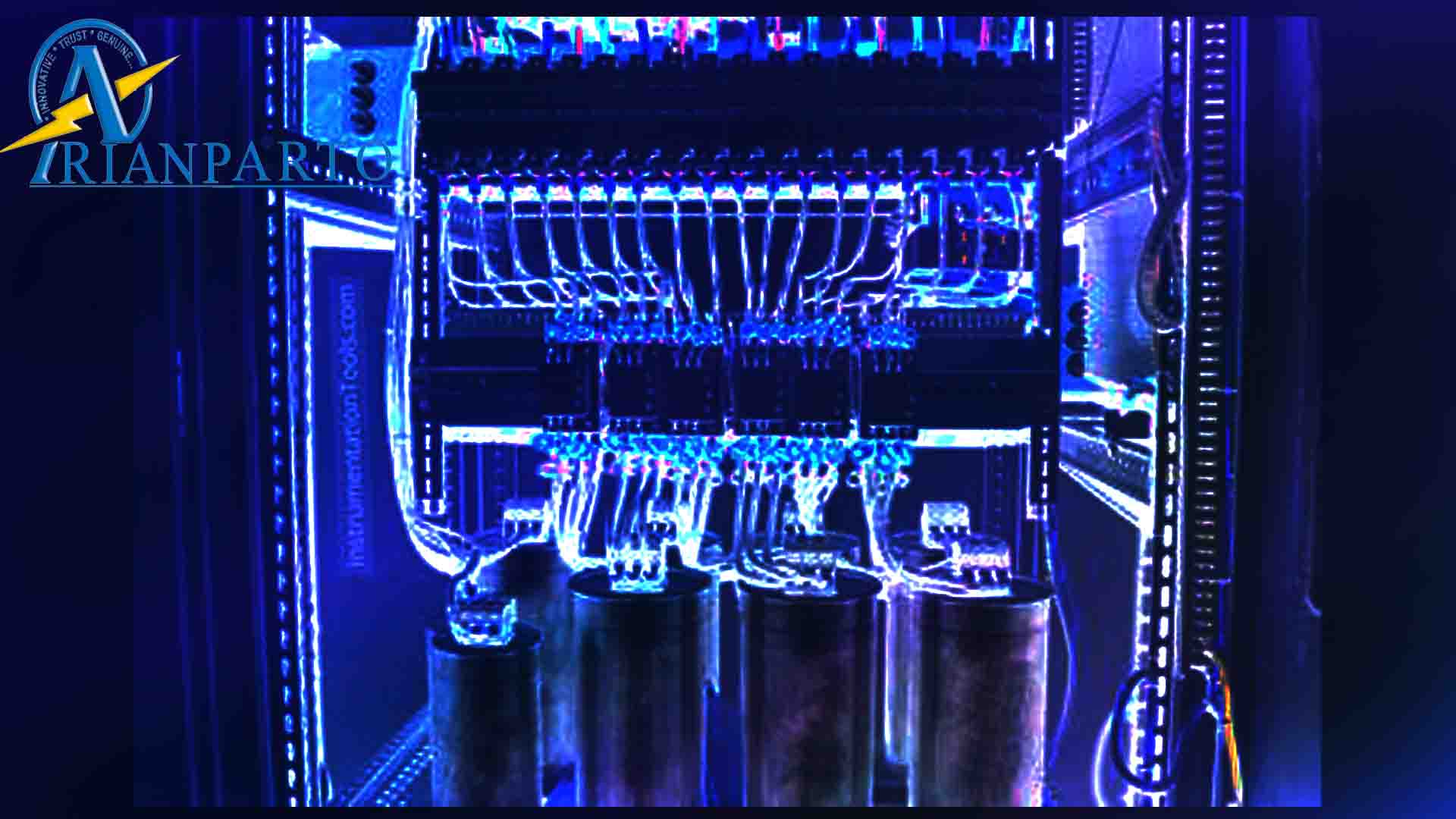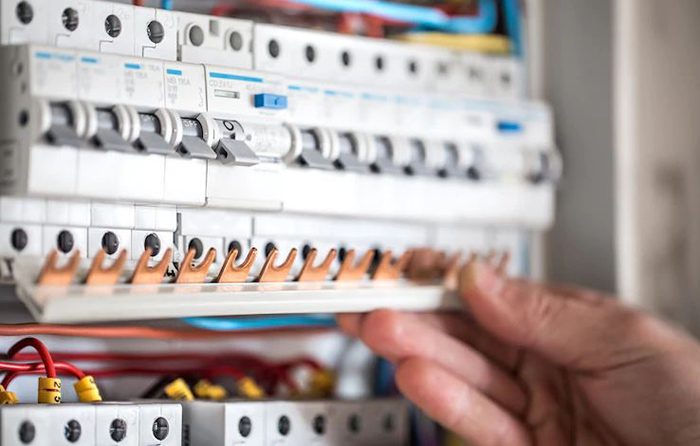Capacitor bank panels play a crucial role in modern electrical systems, especially in industrial and commercial settings. Their main function is to improve power factor by providing reactive power compensation. This helps the system run efficiently and reduces energy costs. Their primary function is to improve power factor by providing reactive power compensation, ensuring the system operates efficiently and reduces energy costs. This article explores various types of Capacitor Bank Systems, their benefits, and how to integrate them into your electrical systems.
What is a Capacitor Electrical Panel and Its Role in Electrical Systems?
A capacitor electrical panel or capacitor bank panel is a device designed to improve the power factor of an electrical system. It consists of several capacitors that are connected to the electrical grid to supply reactive power, thereby enhancing the overall efficiency of the system. Capacitor panels are crucial in applications with large motors, transformers, or other inductive loads. Power factor correction helps save energy, cut costs, and extend the life of electrical equipment.
Understanding Different Types of Capacitor Bank Panels

Capacitor Bank Systems come in various types, each tailored for specific needs based on voltage, capacity, and application requirements. Here are the most common types:
Fixed capacitor bank switchboards: These panels are used for constant power factor correction. They are ideal for applications with stable electrical loads.
Automatic Capacitor Bank Panels: These panels include automatic control systems that adjust the number of capacitors engaged based on real-time power factor measurements. They are best suited for applications with fluctuating loads.
Hybrid Capacitor Bank Panels: A combination of both fixed and automatic capacitor banks, offering flexibility for systems with varying load conditions.
Overview of Various Capacitor Types in Capacitor Panels
Capacitors used in capacitor bank panels can be categorized into four types:
Oil-Filled Capacitors: These capacitors are ideal for high-voltage applications and offer durability and efficient heat dissipation.
Dry Capacitors: Used in lower-voltage applications, dry capacitors are more compact and do not require oil for cooling.
Gas-Filled Capacitors: Gas-filled capacitors are reliable in medium-to-high voltage applications and are suitable for harsh environments.
Ceramic Capacitors: Mostly used in low-voltage applications, ceramic capacitors are known for their stability and compact size.
Applications of Capacitor Electrical Panels in Industries and Facilities
capacitor bank switchboards have become essential in various industries, helping improve energy efficiency and lower operational costs. Some key applications include:
Industrial Plants: In large manufacturing facilities, Capacitor Bank Systems help correct power factor, reduce energy consumption, and enhance machinery performance.
Commercial Buildings: Capacitor panels are used to optimize the electrical grid in commercial buildings, particularly in environments with heavy HVAC or lighting systems.
Data Centers: To ensure efficient energy use and improve power quality, capacitor panels are used in data centers, where power reliability is critical.
Electric Utilities: Capacitor banks help utilities improve the overall efficiency of the power distribution system.

Technical Specifications and Features of Capacitor Bank Systems
The technical specifications of capacitor bank panels vary based on the application and type of capacitor used. Key features include:
Voltage Rating: The maximum operating voltage for the panel. The voltage rating must align with the system’s electrical requirements.
Capacitance: Measured in farads, the capacitance determines the amount of reactive power the panel can deliver.
Current Rating: This is the maximum current the panel can safely handle without risk of damage.
Control and Protection Features: Capacitor bank panels may include voltage controllers, circuit breakers, and fuses to protect the system.

Advantages of Using Capacitor Electrical Panels for Energy Efficiency
Using capacitor electrical panels offers several advantages, particularly in terms of energy savings and operational efficiency:
Improved Power Factor: These panels help improve energy efficiency by correcting power factor and enhancing machinery performance, particularly in industrial environments requiring high protection levels.
Reduced Energy Costs: By correcting the power factor, capacitor panels reduce the demand for reactive power, resulting in lower energy bills.
Enhanced Equipment Life: By ensuring proper voltage levels and reducing electrical stress, these panels extend the lifespan of motors, transformers, and other equipment.
Lower Operational Costs: Efficient power factor correction reduces energy consumption, maintenance, and system downtime, lowering overall operational costs.
Price Analysis and Cost Considerations for Capacitor Panels
The cost of capacitor bank panels varies based on factors such as the type of capacitors, voltage rating, and the system’s capacity. Automatic and hybrid panels tend to be more expensive due to their advanced features. However, the long-term savings from improved energy efficiency and reduced maintenance costs often justify the initial investment.
Guide to Purchasing and Ordering a Capacitor Panel from Arian Parto
Before purchasing a capacitor bank panel, consider your specific needs, such as power factor correction, voltage rating, and panel type. Our team is here to help you choose the right solution. To ensure you get the right solution, follow these steps:
Consult with Experts: Contact suppliers like Arian Parto to discuss your needs and receive expert advice on selecting the appropriate capacitor bank panel.
Request a Quote: Provide your specifications to get a detailed price quote and ensure that the panel will meet your energy efficiency goals.
Customize the Panel: Depending on your requirements, you can customize the capacitor bank panel to fit your specific application.
Installation and Support: Ensure that your supplier offers installation services and technical support for ongoing operation and maintenance.
Main Components of a capacitor bank switchboard and Their Functions
A typical capacitor bank panel consists of several key components, each serving a specific function to ensure smooth and efficient operation:
Capacitors: Store and supply reactive power to the system.
Circuit Breakers and Fuses: Protect the panel and electrical system from overloads and short circuits.
Control System: Monitors the system and adjusts the capacitors based on real-time power factor measurements.
Switching Mechanism: Allows for the manual or automatic connection and disconnection of capacitors.
Step-by-Step Guide to Installing and Configuring a capacitor bank switchboard
Here’s a general guide to installing and configuring your capacitor bank panel:
Initial Planning and Design: Assess your system’s requirements and determine the appropriate size and type of capacitor bank.
Installation Process: Follow electrical safety protocols during installation, ensuring proper wiring and grounding.
Adjusting and Configuring: Set up the control system to optimize power factor correction and monitor system performance.
User Training: Train operators to manage the system, conduct regular maintenance, and troubleshoot issues.
Troubleshooting and Maintenance Guide for Capacitor Bank Systems
Regular maintenance is essential to keep your capacitor bank panel running efficiently. Perform checks on the system’s components, including capacitors, circuit breakers, and fuses. Look for signs of wear or failure and replace components as needed to maintain optimal performance.

Frequently Asked Questions About Capacitor Bank Systems
-
What is a Capacitor Bank System and What Are Its Features?
A capacitor bank switchboard helps improve the power factor of an electrical system by providing reactive power compensation. It includes capacitors, protection devices, and control systems.
-
What Are the Different Types of Capacitor Banks?
The most common types are fixed, automatic, and hybrid capacitor banks, each suited for different load conditions and applications.





